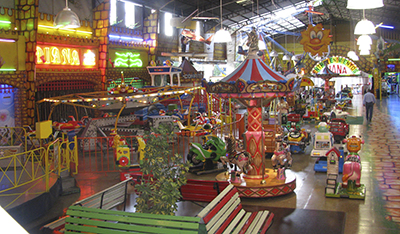Clearly a market for the future, South America is emerging as a key territory for many of today’s equipment suppliers. Like many emerging markets, however, it presents a number of challenges that must be overcome in order for the continent to fulfill its potential, writes Simon Liddle.

THE eyes of the world were on South America as InterGame went to print. The Football World Cup in Brazil was in full swing and, with thousands of soccer enthusiasts from both the host nation and its neigbours in attendance, each game feels like a ‘home’ fixture. The continent’s colourful vibrancy is perfectly captured by the TV cameras, as fans from across the vast continent demonstrate their love of sport and, above all, fun.
The potential for growth within both the amusement and gaming sectors is enormous in South America. It boasts some of the most rapidly maturing marketplaces, while others are only now beginning to develop. Because of a myriad of legal and regulatory frameworks, some territories are also more readily accessible to suppliers than their neighbours – Argentina and Chile are strong and mature gaming markets, yet Brazil, for example, refuses to allow casinos. This is further complicated by often restrictive import duties, which has deterred some companies from entering the marketplace.
The amusement business in South America is developing in much the same way as other emerging markets around the world. As economies improve, earnings increase and demand for entertainment, particularly family entertainment, becomes ever greater.
InterGame caught up with Tom Kane of Coastal Amusements just after he’d returned from visiting locations in South America. His company, one of the US’ leading suppliers of amusement equipment, has found significant demand for its Simpsons Soccer, Temple Run and Batman games. Simpsons Soccer, he said, is consistently one of the top five earners. Said Kane: “Family entertainment centres are the biggest expansion and replacement markets. There is also a developing sector for children’s mechanical softplay areas.”
Read the full article in the July issue of InterGame

